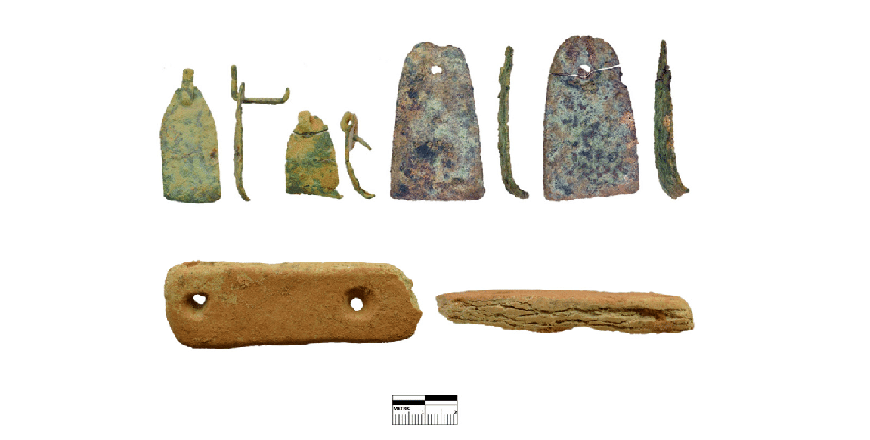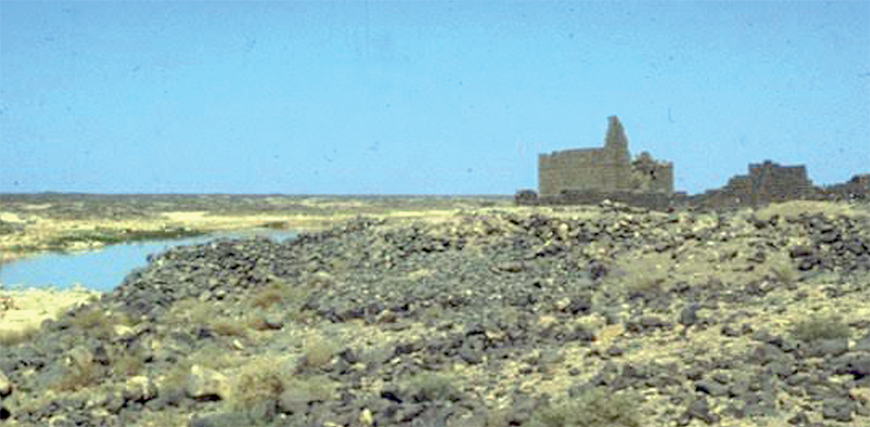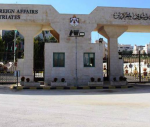You are here
Unearthing eastern Jordan’s nomadic legacy
By Saeb Rawashdeh - Jan 06,2024 - Last updated at Jan 06,2024

A petroglyph from Jabal Qurma in the east Jordan (Photo courtesy of The Jabal Qurma Archaeological Landscape Project)
AMMAN — The inhabitants of the inhospitable Black Desert were often overlooked or wrongly perceived by contemporaries from ancient political centres. The recent scholarly research criticises a traditional division between nomadic and sedentary communities, arguing that nomads and farmers were more interconnected than previously thought. Nomadic communities inhabited eastern Jordan during the Classical and Late Antique periods, affecting the political dynamic of the region split between warring empires.
“Most of what is known about nomadic communities who inhabited the Badia of north-eastern Jordan comes from Safaitic inscriptions, conventionally dated between the 1stcentury BC and the 4thcentury AD, and from ancient literary sources,” noted Harmen Huigens from Ulster University, adding that the archaeological remains of these communities have been very poorly explored.
Until recently, the archaeological study of historical-period nomadism in the Badia was restricted to a handful of excavations of burial cairns and the documentation of remains that were only incidentally encountered in archaeological projects focusing on the region’s prehistoric past.
“This is unfortunate, as relying solely on textual sources is problematic for a number of reasons. Firstly, the Safaitic inscriptions carved out by nomads are difficult to date accurately, restricted in terms of content, and only provide information on those communities that were actually able to write. Secondly, Roman/Byzantine and Early Islamic literary sources may be heavily biased by their ‘outsiders perspective’ on nomadic communities,” Huigens outlined.
One method is to focus more systematically on nomadic communities in different historical periods. The Jabal Qurma Archaeological Landscape Project is one of such attempts where scholars went on a two-month-long campaign to study nomadic communities who lived in the Jabal Qurma during the Classical and Late Antiquities periods.
The Jebel Qurma region is located 30 km east of Azraq, and the desert environment did not prevent a long history of occupation, although it had certain discontinuities.
“After a long period of apparent desertion during the second, and possibly much of the first, millennia BC, the region was frequented again by nomadic communities between the Hellenistic and Early Islamic periods,” Huigens said, adding that thousands of Safaitic inscriptions and petroglyphs from the region provide the first line of evidence about locals.
Furthermore, there are numerous archaeological remains, including camp sites, burial cairns, and artefacts left behind on the ground surface that can be associated with nomads, dateable to between the Hellenistic and Early Islamic periods, the scholar underlined, adding that the study of camp sites of mobile peoples of the ancient Near East is not unproblematic.
“Although numerous studies have shown that camp sites can persist in the archaeological record, archaeological visibility remains a problem not easy to overcome,” Huigens stressed, noting that only when such camp sites consist of relatively durable installations it is easy to detect them in the sea of basalt rocks.
Available ceramics are helpful in the identification of nomadic camp sites, but archaeologists sometimes unwarrantedly assume that the use of pottery is common throughout society, Huigens explained, adding that there are indeed ethnographic examples of mobile pastoralists who used wooden or metal containers rather than pot. In the Black Desert, the study of historical-period camp sites is restricted to ethno-archaeological studies of recent bedouin camps.
“The morphology of residential units like tents or huts is also completely unknown, as is the nature of other forms of material culture [notably pottery] that can potentially be encountered at camp sites. This makes it difficult to assess the nature of nomadic occupation in the badia, even in rather basic terms,” the archaeologist explained, saying that issues such as chronology, mobility, group size and economic practices are difficult to assess when the areas where nomads were actually living remain unexplored.
As we mentioned, ceramics are important to dating eras like the Hellenistic and Early Islamic that span more than a thousand years.
“Material from the preceding Iron Age and subsequent Fatimid periods is rare or absent. Most of the ceramics were highly fragmented and as a result, the number of sherds that could be dated on the basis of comparisons with published corpora is fairly low,” Huigens elaborated.
A total of 98 diagnostic pottery fragments have been ascribed a Classical or Late Antique date so far, and the extensive fragmentation hindered attempts to provide a detailed assessment of the types of vessels represented at these sites.
“In general terms, closed forms, such as cooking pots and jars, are better represented that open forms, such as bowls,” Huigens said, noting that only a single oil lamp has been identified.
Particularly significant is the absence of high-quality ceramics typical of the period, such as Nabataean painted fine wares and terra sigillata wares; therefore all of the dated ceramics are the remnants of mass-produced vessels that were brought into the Jebel Qurma region from elsewhere, Huigens underscored.
Related Articles
AMMAN — The Safaitic inscriptions within the Black Desert depict scenes from the daily life of the pre-historic inhabitants, in this a
AMMAN — The Jabal Qurma Archaeological Landscape Project started in 2012, with extensive field surveys and excavations in the basalt desert
AMMAN — Northeastern Jordan was a significant area for inscriptions dating from different historical periods.

















